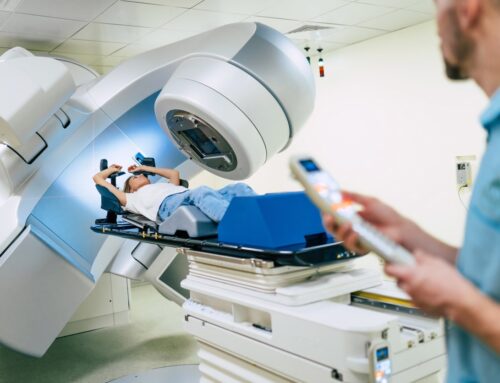
Prevention and Management of Opioid Induced Constipation
Opioids are widely used for treatment of both chronic and acute pain, and while they can be effective for pain management, it is important to be aware of the health ramifications of one of their most common side effects: constipation. The severity of constipation and need to monitor dosage depends on several variables, including age, co-morbid conditions, drug interactions, and genetics.
Functional vs. Opiate-Induced Constipation
Functional constipation is broadly defined as the difficult passage of hard, dry stool, less frequently than the patient’s typical pattern of bowel movements. Characterizing a patient as constipated cannot be based solely on the number of bowel movements per day, or week, but rather as a function of their normal regularity. The Rome IV criteria for functional constipation includes at least two of following for a period of at least 3 months:
- Hard stools in at least 25 percent of defecations
- Straining in at least 25 percent of defecation
- A sensation of incomplete evacuation in at least 25 percent of defecations
- Less than 3 bowel movements per week
- Use of manual measures (digital evacuation and/or support of the pelvic floor) to help move or remove the stools from the rectum
Opiates’ effects on gastrointestinal motility have long been recognized by the medical community, and opioid-induced constipation (OIC) accounts for 40% – 60% of cases in non-cancer patients (for cancer patients this percentage is as high as 90%) receiving opioids. Opiate receptors in the gastrointestinal tract reduce motility and increase transit time, and the resulting increased absorption of fluid by the intestinal tract leads to hardening of stool and constipation.
Prevention of Opioid Induced Constipation
Prevention is the best approach to managing OIC, and an appropriate regimen should be tailored for each patient’s needs when beginning opioid therapy. Commencing an oral laxative regimen upon opiate initiation is not unreasonable given the high prevalence of OIC, in particular for patients with immobility, advanced age, poor diet, intra-abdominal pathology, neuropathy, and/or concurrent use of other constipating drugs.
If constipation worsens (and is unrelated to a change in dosage), patients should be assessed for alternative or contributory causes including an abdominal and anorectal exam to rule out obstruction, fissures, and hemorrhoids.
Constipation and Patient Education
There are common misconceptions about constipation, its treatment, and causes, and so it’s important to educate patients on constipation prevention when prescribing opiates. Increasing dietary fiber, fluid intake, and physical exercise are the backbone of prevention therapy.
Fiber Intake: Patients should be advised to consume fiber-rich foods, like apples, bananas, prunes, pears, raspberries, beans, broccoli, spinach, kale, squash, lentils, and peas. Any type of bran product is also helpful.
Hydration: Patients must stay hydrated when taking opioid medication. Fluids, especially water and non-diuretics, keep the digestive tract moving and promote healthy bowel movements. Lack of hydration slows the stool movement through the intestine which can cause constipation.
Physical Activity: Moderate increases in physical activity, as tolerated, can be beneficial in patients with mild constipation.
Routine: Advise patients to set aside the same time each day to have a bowel movement, especially after breakfast, and to respond to the urge to defecate right away and not withhold stool.
Patients should also be advised to limit their intake of foods and/or over the counter medications that cause or exacerbate constipation, such as processed grains, milk/dairy products, fried foods, and probiotics.
Pharmacotherapy and OIC
All healthcare workers who prescribe opioids need to also consider prophylactic laxative therapy for constipation. Patients with predisposing factors (immobility, advanced age, poor diet, intra-abdominal pathology, neuropathy, concurrent use of other constipating drugs) are specifically indicated. All types of laxatives can be used as initial therapy except for the bulk-forming laxatives. The only laxatives that should be avoided are the bulk-forming laxatives, like psyllium. The most common regime for OIC is a stimulant (senna/bisacodyl) with or without a stool softener (docusate), or daily administration of an osmotic laxative (polyethylene glycol). Stool softeners are ideal for preventing constipation; they do not work well for established cases of constipation.
Stimulating agents such as Senna and Bisacodyl are not recommended for longer-term use due to adverse side effects. Bisacodyl stimulants work by irritating the lining of the intestine wall causing muscle contractions that move along stool mass. This process occurs whether bisacodyl is taken orally or as a suppository. The list of common side effects include rectal irritation, diarrhea, and abdominal cramping.
Effective constipation management for patients suffering with OIC improves patient physical and mental health, and reduces illness, injury, and cost of care.
Enemeez® | DocuSol®Constipation is the most common gastrointestinal complaint in the United States. An estimated 42 million individuals have bowel issues or constipation. The docusate sodium Enemeez® and DocuSol® mini-enema have been used by patients and healthcare facilities for over 17 years |
| The Enemeez® and DocuSol® mini-enema delivers 283mg of docusate sodium and functions as a stool softener hyper-osmotic laxative by drawing water into the bowel from surrounding body tissues, softening the stool and promoting a bowel movement.
Enemeez Plus and DocuSol® Plus both contain an additional 20mg of benzocaine, assisting in the anesthetization of the rectum and lower bowel. The formulation was developed for patients who experience hemorrhoids, fissures, or painful bowel movements. No waiting overnight. Let’s your patient get on with their lives! |
Click here to request samples of our products and/or request an in-service or educational event to learn more about our products!
Disclaimer: The material contained is for reference purposes only. Alliance Labs, LLC and Summit Pharmaceuticals do not assume responsibility for patient care. Consult a physician prior to use. Copyright 2020 Summit Pharmaceuticals and Alliance Labs, LLC.
Sources:
This article is based in part on a presentation given by Dr. Fargo Khoury. Dr. Khoury is an Inpatient Physiatrist at Eisenhower Medical Center in Rancho Mirage, CA. He completed his training at Loma Linda University Medical Center, and is board Certified in Physical Medicine and Rehabilitation.
https://www.ncbi.nlm.nih.gov/books/NBK493184/
Gastrointestinal Endoscopy: Morphological consequences of bisacodyl on normal human rectal mucosa: effect of a prostaglandin E₁ analog on mucosal injury; Vol 36, No. 2, 1990: D.R. Saunders, MD, R.C. Haggitt, MD, M.B. Kimmey, MD, F.E. Silverstein, MD







